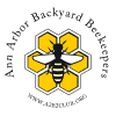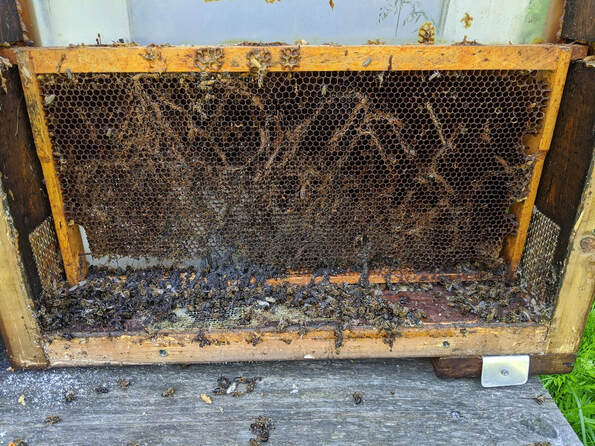 Achroia grisella (The Lesser Wax Moth) As I’ve said before, wax or comb is an invaluable source for a beekeeper. One of the challenges that faces a beekeeper is how to store this precious resource in order to preserve it for use in future hives. Two factors to consider for frame storage are moisture which can cause frames to mold and most importantly wax moths. As hive beetle larvae can destroy improperly stored frames of honey, wax moths and their larvae can destroy all frames containing comb, though they show a preference for older, darker comb that has contained brood. Best There are two ways to store comb that are more successful and full-proof ways to prevent wax moth damage. The best way to store wax frames is in a freezer. This not only kills wax moth eggs that are present in all comb that has been inside a hive for any length of time, but will also protect the comb from pests such as mice and from mold. Unfortunately, most beekeepers do not possess large enough freezers to hold all of their excess comb. In this case, the second-best method of storage is to stack boxes of frames such that they are protected from pests (i.e. with a telescoping outer cover on the bottom and top of the stack), and to apply moth crystals (or Para-Moth, NOT MOTH BALLS) according to the label. Crisscross The two easiest ways to store frames of wax do not require a freezer or the purchase of chemical treatments, but are sometimes not as successful. The first is to store the boxes containing the frames in an open-air structure (for ventilation), on their sides (so that sunlight and air flow may penetrate between the frames), and in a crisscross pattern (with each box facing ninety degrees to the one above and below). Wax moths do not like light or the flow of air, so this storage will help deter them, though may not work for frames containing darker brood comb. The final way to store frames is to place the boxes of comb on strong hives that will be able to patrol the comb and keep the frames free of wax moths. With this final method, a beekeeper should check the storage hives about every week or so to make sure they are still strong and that wax moths have not moved into the frames of the stored boxes. More Information: https://www.honeybeesuite.com/how-and-where-should-i-store-empty-supers/ https://glorybee.com/blog/top-3-ways-to-prevent-wax-moths/
1 Comment
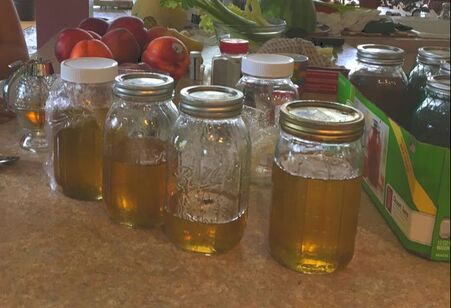 Amazing Honey has many amazing properties. At the proper water content, honey that has been properly stored will never expire or go bad. In fact, honey that has been recovered from Egyptian tombs and is over 2,000 years old is still edible. One of the reasons for this longevity is that honey is antimicrobial, meaning that organisms such as bacteria and fungi do not live and grow in honey (the one exception to this is botulism spores). Three factors that make honey antimicrobial are 1) the fact that it is slightly acidic, 2) that it is a supersaturated solution, and 3) that it contains compounds such as hydrogen peroxide. Honey has been used for thousands of years medicinally to aid in wound and burn healing. Blend Bees make honey during the spring, summer, and fall, but typically only consume it during the winter and early spring, preferring to consume fresh nectar and pollen in the form of bee bread (pollen mixed with nectar or honey) during the honey flow. Honey can be thought of as nectar that has been processed for long term storage. Unlike when bees store the pollen from multiple species of flowers in the same cell, bees only store nectar from the same species of flower in the same cell. Also, honey bees typically store all the nectar obtained from a single floral source in the same area of the hive or same frame. This results in different colors of honey depending on the floral source and different varieties of honey (ex. clover honey vs orange blossom honey). Crop Though I think it’s funny to think of honey as bee vomit, honey is actually the substance produced by bees when regurgitated nectar from their crop (or honey stomach) is exposed to the enzyme invertase produced by the bee’s salivary gland which converts the sugar sucrose from nectar into glucose and fructose. The liquid honey which is now made up of glucose and fructose is stored in the wax cells of the hive and dehydrated by the bees until its water content is at or below 18.6%, at which point the wax cells are capped. More Information: https://honey.com/about-honey/how-honey-is-made 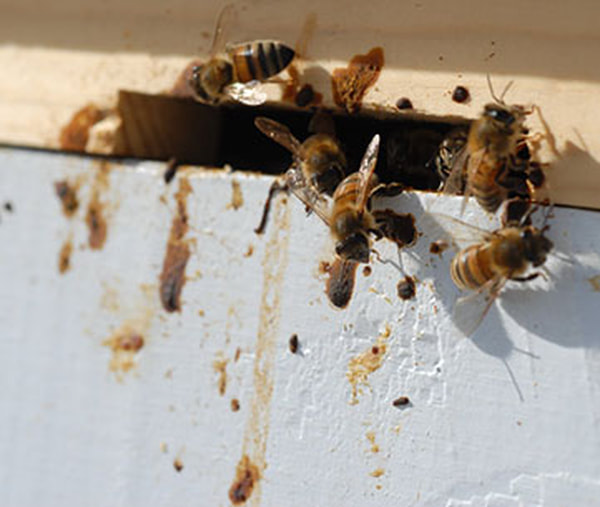 https://beeaware.org.au https://beeaware.org.au Ailment A big thing to watch for in the spring is signs of disease in your hives. Cool, wet springs often bring brood diseases such as sacbrood, chalkbrood, Nosema/dysentery, and European foulbrood (EFB). Sacbrood is a viral disease where the larvae turn brown and pointy. Chalkbrood is a fungal disease where the larvae look like black, white, or gray mummies. Nosema apis is a microsporidian parasite that can cause dysentery (diarrhea) in bees that can be seen as tan to brown streaks on the tops of the frames and around the hive entrance. Bees can also get dysentery from too much ash in their diet or too much moisture in their hive. EFB is a bacterial disease that causes the larvae to look yellow, twisted, and “skeletal.” Treatment of these spring diseases includes feeding sugar syrup, taking care of moisture problems in the hive, and sometimes requeening the hive. Varroa testing and treatment should also begin in the spring. Backfilling In the early spring before many plants are blooming, beekeepers may also want to feed their colonies. Feeding pollen, the bee’s source of protein, can encourage your queen to lay more eggs. You may also want to feed 1:1 sugar syrup to encourage comb production if you have undrawn foundation frames. Sometimes feeding too much sugar syrup may induce a swarm if the bees choose to store the syrup in the brood chamber (called backfilling) and the queen runs out of space to lay her eggs. Copy Spring is the time of year where honey bees, like most animals, reproduce. Though the queen lays eggs throughout most of the year to replenish and boost the population of the colony, the true, natural reproduction of the honey bee colony is a swarm. If you hive survived the winter, has a laying queen, and has pollen coming in, you will need to watch for signs that your colony may be ready to swarm. Since swarming causes the loss of bees and introduces a non-native species into the environment, beekeepers try to prevent swarms either by giving their bees more drawn comb or by splitting their colonies. Another technique that may be useful in the spring is called reversing. This is moving an empty box of frames from the bottom of the hive to the top. The bottom box may be empty (no bees) because the bees move up to the top of the hive during the winter. This is also a good time to replace frames of old, dark comb from the empty box with fresh foundation frames. More Information: https://pollinator.cals.cornell.edu/sites/pollinator.cals.cornell.edu/files/shared/documents/Beekeeping%20Calendar%20for%20the%20Northeast.pdf Array
There are almost an infinite number of ways to feed your bees. You can feed them inside or outside of the hive using a wide array of commercial or homemade feeders. Here I will go over just a very small number of feeders and their uses. There is no “best” choice. There are pros and cons to each and it is all in what works best for you. Some hold more syrup and don’t need to be filled as often, while others are easier to fill or to keep clean. One constant over all ways to feed you bees is that feeding inside the hive ensures that particular hive gets the nutrition and is less likely to attract robbers, pests, and bees from other hives which also means it is less likely to spread disease than community feeders outside the hive. Beetles There are two forms that pollen or pollen supplement/substitutes can take. One is a dry powder and the other is a moist, doughy pollen patty that has the pollen part mixed with sugar syrup. Typically, the patties are fed on top of the frames inside a hive and the powder is fed in a feeder outside the hive. One drawback to feeding the patties inside the hive is that they can attract pests like small hive beetles. One drawback to feeding the powder outside the hive is that you will need to purchase or make a feeder and it will attract pests and bees from other colonies outside of your apiary. Closed Sugar syrup can be fed from either an open or closed container. For example, frame feeders go right in the hive in place of a comb frame and have no lid. One drawback to them is that the bees may drown if you do not have something floating on top of the syrup. Also, since they are open, they can get dirty with debris, mold, etc. Top feeders are similar in that they are open feeders inside the hive, only these are larger and go between the top box and the inner cover. Again, the main disadvantage of a top feeder is bees drowning, but most commercial top feeders have designs to prevent this. Mason jars with very small holes poked in the lids are by far the most common feeding method for hobby beeks for sugar syrup. These can be placed inside the hive or outside the hive. Commercial beekeepers typically fill 5 gallon buckets with holes in the lids with sugar syrup and either place these over the hole in the inner cover or on stands outside the hives. More Information: https://www.honeybeesuite.com/what-type-of-honey-bee-feeder-is-best/ 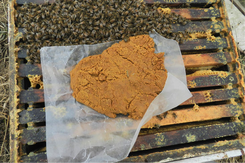 Aware As a beekeeper, it is often said that you also have to become a botanist and a meteorologist so that you not only know what is blooming in your immediate area and when it is blooming, but also to know your local weather patterns so that you are aware of situations that may prevent your bees from accessing what is in bloom. Both the plants available for your bees and weather conditions during the year are hyper localized based on a number of factors including geography and whether you are in an urban, suburban, or rural area. What is blooming in your area in early May is likely very different from what is blooming just a few miles down the road. It is important to keep this in mind to know when your colonies need to be fed. Bloom Honey bees get all of their nutrition from flowers, so when there are no plants in bloom, bees must rely on either their food stores or the beekeeper to survive. When there are no nutritional resources available in the environment, this is called a dearth. Typical times for a dearth in MI are the winter, late summer, and late fall, but there can also be a kind of dearth in the spring if the weather is too cold and wet for bees to access the blooming trees, shrubs, and plants. Concentration The 2 nutritional sources for bees are pollen and nectar. Beekeepers may need to feed either pollen, pollen substitute (a protein rich fake pollen), or pollen supplement (a protein rich substance containing some real pollen) in times when pollen is scarce but the bees are rearing a lot of brood, like in the springtime. Some beekeepers will also feed 1:1 sugar syrup as a nectar substitute in the spring until the bees stop taking it which indicates they are getting adequate nectar from the environment. Typically, 2:1 sugar syrup is fed if there is a fall dearth to help bulk up winter honey stores. Since bees will not take sugar syrup in the winter, many beekeepers put dry sugar or fondant in their hives over the winter to ensure their bees won’t starve. NOTE: Never feed sugar syrup with honey supers on. This will lead to sugar syrup “honey.” More Information: https://pollinators.msu.edu/resources/beekeepers/feeding-honey-bees/ 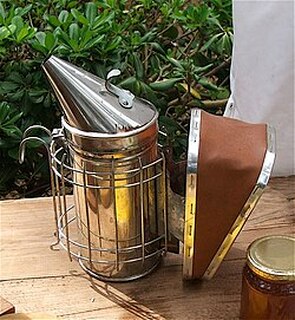 Acceptable There are many specialized pieces of equipment like frame holders to keep frames off the ground when inspecting your hives, and fume boards to force bees out of honey supers you want to remove and harvest. Some beekeepers choose instead to brush bees off their frames with a bee brush, while others feel this tool can injure the bees too easily. There are also the green plastic drone boards we talked about in the section on Varroa control that are also sometimes used be queen breeders to help saturate an area with drones carrying specific genetic traits. Before buying any piece of beekeeping equipment, thoroughly research what it is for and if you truly need it for your apiary. Borderline Other pieces of equipment have a time and a place, but are often not necessary. For example, some beekeepers use a metal or plastic grate called a queen excluder to keep their queen down in the brood chamber and out of the honey supers while others do not. Most beekeepers use a block of wood with slits cut into it, an entrance reducer, in the entrance of smaller or weak hives to prevent pests and robbing, but anything partially blocking the entrance (even grass) will do in a pinch. There are also special robbing screens that go over the entrance of the hive which some beekeepers use during a nectar dearth to prevent robbing. There are both pros and cons of wearing gloves and the type of gloves you choose to wear. Thick leather gloves may prevent stings, but make you clumsy and prone to crushing bees, while nitrile gloves or bare hands are easier to keep clean and maintain dexterity, but stings on your hands can lead to swollen fingers and painful knuckles. Compulsory Three required pieces of equipment for a new beekeeper are a smoker, a veil, and a hive tool. No matter what you see on YouTube, you should always at least wear a veil when working your bees. Getting stung in the face is no laughing matter and bees are drawn to the dark circles that make up a face as well as the CO2 you expel from your nose and mouth. Personally, I recommend beeks wear a full bee suit until they are comfortable working with bees (an early sting may increase your anxiety around bees and they can sense it). A new beek should also always light a smoker when working their bees even if the bees are calm and its use turns out smoking them is not necessary, as lighting a smoker when the bees are already agitated guarantees you will have trouble or it will go out. Hopefully the need for a hive tool to pry the lid off the hive and the boxes and frames apart is self-explanatory. More Information: https://www.youtube.com/watch?v=HaIidPJMJus 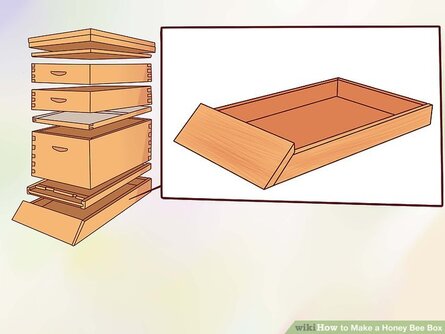 Assembly The standard Langstroth beehive is a wooden structure with several key parts. The first part is the bottom board which can be either solid wood or screened, a wooden frame with a screen in the middle to allow ventilation and a form of cultural mite control. The next part of the hive is one or more boxes filled with frames. Then comes the inner cover, a mostly flat piece of wood with a vent hole in the center. Finally, there is a telescoping outer cover that fits over the inner cover and a little bit of the top box to keep out rain and snow. The picture on the left also shows a hive stand which helps to raise a hive off the ground, but isn't a critical part of the hive assembly, and a queen excluder which goes between the brood box and the honey supers, but also isn't required. Boxes There are two lengths of boxes and three different heights of boxes. The two different lengths of boxes are 8-frame and 10-frame, being long enough to fit 8 frames or 10 frames respectively. The three different heights of boxes are deep, medium, and shallow. Deep boxes are typically used for the bee brood, mediums are sometimes used for bee brood, but more often for honey, and shallow boxes are pretty much exclusively used for honey. Because they are mainly used for honey storage, medium and shallow boxes are often referred to as honey supers, while deep boxes are also sometimes called brood boxes. Correct Frames are all the same length (the standard width of the boxes) and three different heights to fit the height of the box. Depending on the height of the frame (and which box they fit), frames are either deep, medium, or shallow frames. While a medium or shallow frame will fit in a deep box, it will not be as high as the box and will leave a gap between the bottom of the frame and the bottom board or the tops of the frames of the box beneath it. Bees will then spend a tremendous amount of energy adding comb to the bottom of the too-short frame to fill the gap, so generally a beekeeper wants to put the correct size frames in the correct boxes. More Information: https://www.uaex.uada.edu/farm-ranch/special-programs/beekeeping/uabeeblog/woodenware-guide.aspx Alternative A Warre hive is a vertical hive like the Langstroth hive with multiple boxes that may be heavy needing to be stacked. Unlike with the Langstroth hive where boxes are removed from the top of the hive stack, with the Warre, boxes are removed from the bottom of the stack. The believed benefits of a Warre hive are that it is “closer to nature” and requires less maintenance, but they only require less maintenance because they have much lower honey yields than a Langstroth hive. Normal maintenance for health, space, and disease are still required. It may be more difficult to find equipment and mentorship for a Warre hive and to test and treat the colony for diseases such as Varroa mite. Bench Mark I strongly recommend starting out with a Langstroth hive as a new beekeeper. Langstroth hive components are the easiest to find and often the most cost efficient. Also, most beekeeping courses, information, books, and internet videos are based on the Langstroth hive design. The main disadvantage of a Langstroth hive is that it can become quite tall and that the heavy boxes can be hard to lift and stack. This can be mitigated by splitting your hive in the spring and removing honey supers in a timely fashion. Climate The main advantage of a Kenyan Top Bar hive is that there is only one box and the colony grows horizontally so the beekeeper will not have to lift boxes off the stack. However, the one long box is quite bulky and heavy if it needs to be moved. Unfortunately, these hives are really meant for a more tropical climate, swarm frequently because the bees run out of space, and generally overwinter poorly because bees in a cluster prefer to move up instead of side to side to reach honey stores. They also either require special frames or are foundationless with very delicate comb that is difficult to handle or test for diseases like Varroa mites. Some people who make beeswax products prefer these hives because the bees need to make a lot of wax. More Information: https://www.honeybeesuite.com/in-praise-of-the-langstroth-hive/ 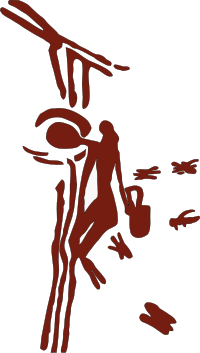 Ancient Beekeeping really started in ancient times with honey hunting and humans harvesting the honey from hives in tree cavities. Traditional honey bee hives kept by the first beekeepers were either conical skeps made of straw or wicker plus mud or wax or cylinders of clay. The problem with these hives is that you have to destroy them to harvest the honey because the comb is fixed (not movable) inside the hive. Skeps are now illegal in some places because they foster poor management and promote disease. Bar The three most common modern beehive designs are the Langstroth hive, the Warre hive, and the Kenyan Top Bar hive. Of these, the Langstroth hive (invented by Rev. Lorenzo Lorraine Langstroth) is by far the most common. One advantage of all of these hives is removable frames that help a beekeeper test for diseases such as Varroa mites and harvest honey without destroying the colony. Langstroth hives and Warre hives are vertical hives, but in Langstroth hives the honey supers go on top of the hive with the brood on the bottom, whereas in a Warre hive, the brood is on the top and the honey is on the bottom. Top Bar hives are horizontal hives with brood in the middle and honey on the edges. Curve There are probably hundreds of different hive designs out there, some designed for aesthetics (garden hives) and some for specific purposes like queen breeding (queen hotels). Still others are meant to simulate the natural habitat of honey bees (log hives). While others try to streamline aspects of beekeeping such as honey harvesting (Flow Hive). Starting out with a more common beehive design will probably help you overcome the steep learning curve in beekeeping and make it a more enjoyable experience. More Information: https://www.smithsonianmag.com/arts-culture/the-secret-to-the-modern-beehive-is-a-one-centimeter-air-gap-4427011/ 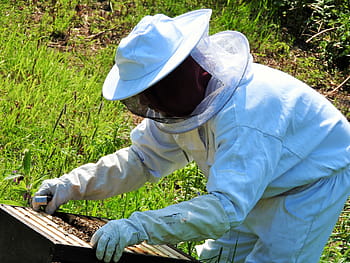 Assessment A hive inspection is a thorough examination and recording of the status of a hive including the contents of every frame. This is usually only done once a year. Most of the time beekeepers will be performing a hive check. For a typical hive check, the beekeeper is looking for 4 things: 1) Is the hive queenright?, 2) Does the hive have enough of the right kind food for the time of year?, 3) Does the hive have the proper amount of space for the time of year? 4) Are there any signs of disease or pest issues (i.e. doing a mite test)? Other more specific checks might be looking for things like queen cells or a virgin queen or if an introduced queen has been accepted, checking to see if a mite treatment was successful (i.e. retesting a hive for Varroa mites), finding and marking a new queen, or checking to see if two hives combined successfully. Before Before a beekeeper enters their apiary, they should have a plan for what they are going to do with each hive and the proper equipment to perform the checks, including some form of record keeping to keep track of what they intended to do and what they actually did. The beekeeper’s plan should include contingencies, for example, what to do if one of the hives is queenless or if one of the hives needs more space or if a Varroa mite test reveals the need to treat the whole apiary. This may also entail bringing extra equipment or mite treatments to the bee yard. C-shaped Checking if a hive is queenright doesn’t necessarily mean finding the queen. Often it is difficult for new beeks (beekeepers) to find an unmarked queen, but fortunately the presence of single eggs in the middle of the floor of a cell is a sign that a queen was present in the hive at least 3 days ago. Likewise, the presence of small, C-shaped larvae indicates a queen’s presence in the hive at least 6 days ago. Hives should have abundant pollen stores in the spring and summer for brood rearing and abundant honey stores in the fall for the winter. Bees generally require more space in the spring and summer less in the fall and winter. A careful inspection of the brood chamber and a Varroa mite check will often warn you of the presence of pests or pathogens. More Information: https://www.youtube.com/watch?v=CohtHUThEVc |
AuthorJen Haeger is a new master beekeeper and board member of A2B2. Archives
August 2022
Categories
All
|

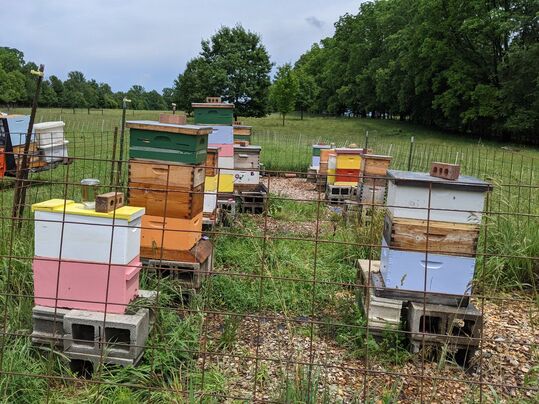
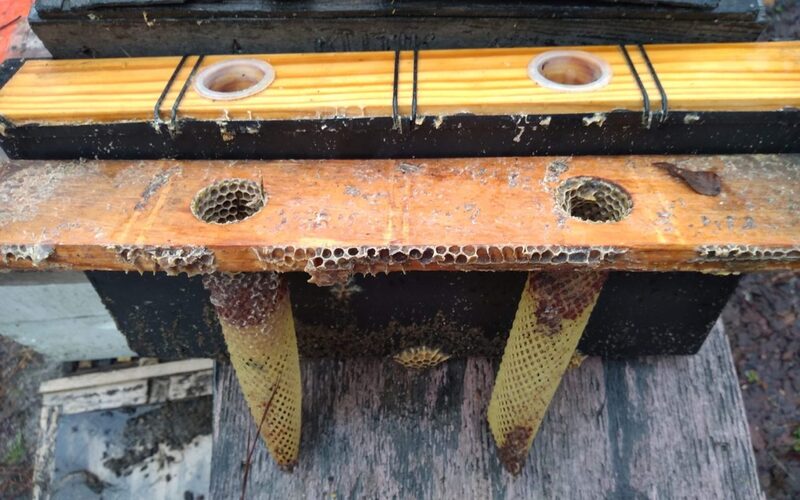
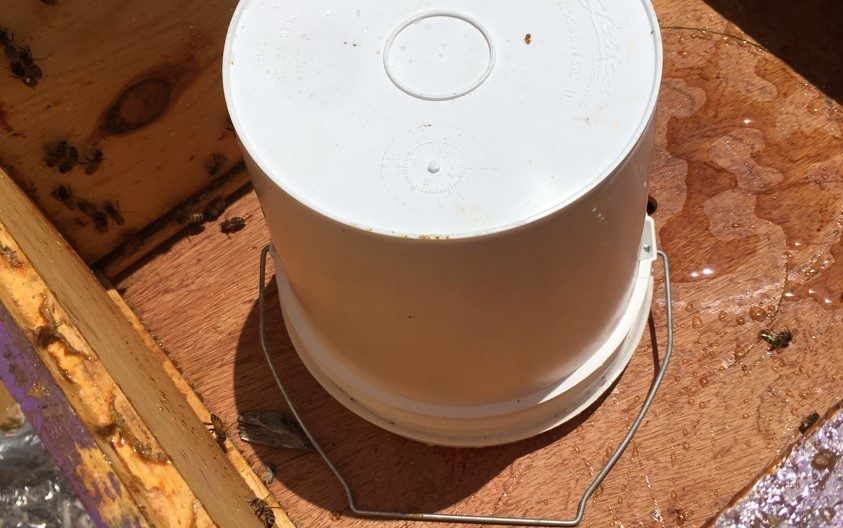
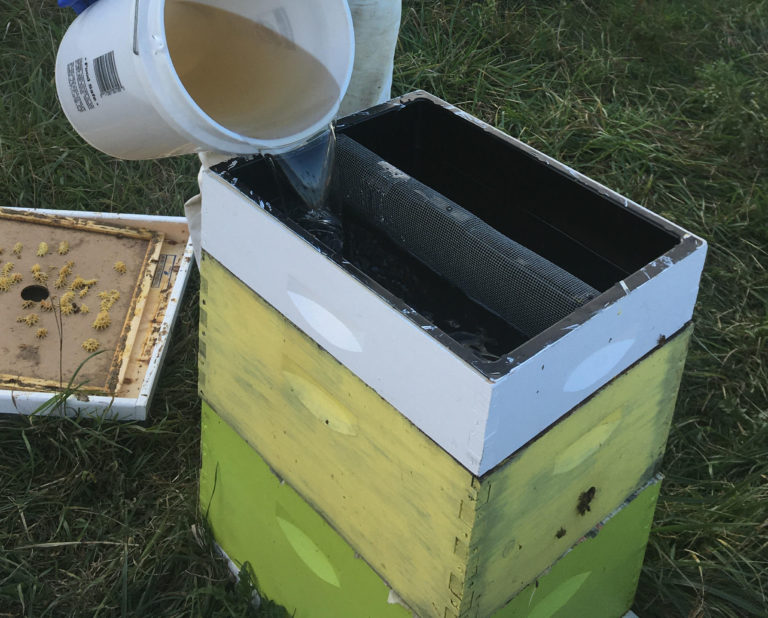
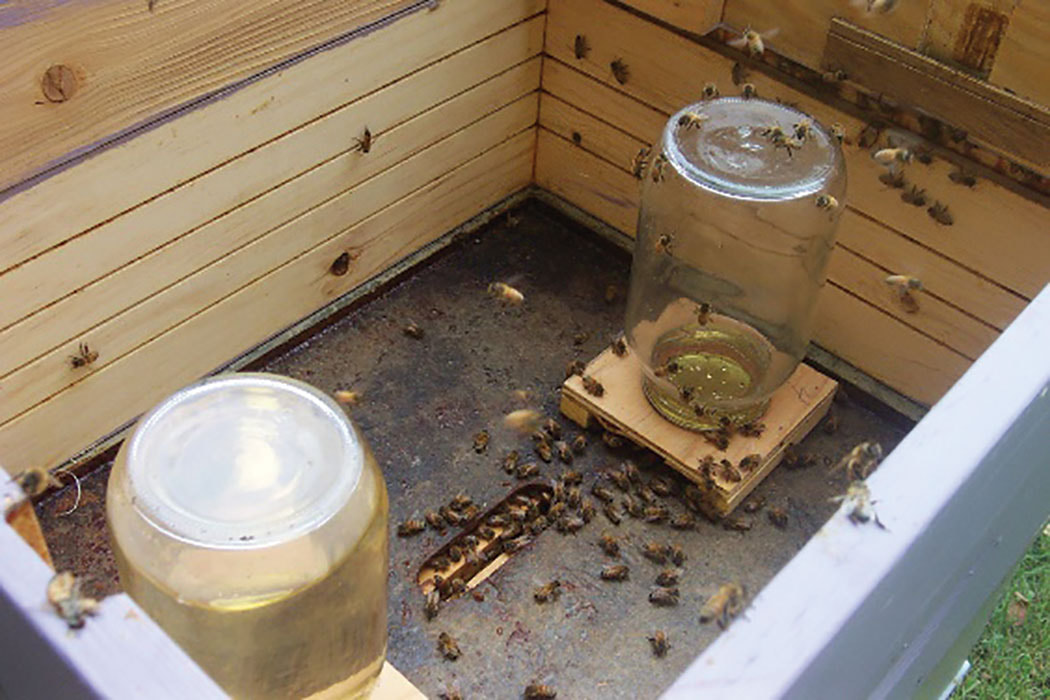
 RSS Feed
RSS Feed
